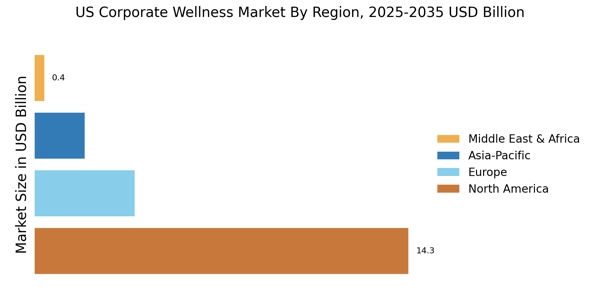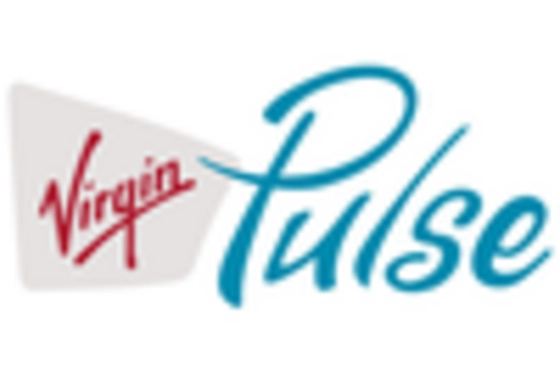The corporate wellness market is currently characterized by a dynamic competitive landscape, driven by an increasing emphasis on employee well-being and productivity. Key players such as Wellness Corporate Solutions (US), Virgin Pulse (US), and Optum (US) are strategically positioning themselves through innovative solutions and partnerships. For instance, Wellness Corporate Solutions (US) focuses on personalized wellness programs that cater to diverse employee needs, while Virgin Pulse (US) emphasizes digital health engagement tools that enhance user experience. Optum (US), on the other hand, leverages its extensive healthcare network to provide integrated wellness solutions, thereby shaping a competitive environment that prioritizes comprehensive health management.
The market structure appears moderately fragmented, with numerous players vying for market share. Key business tactics include localizing services to meet regional demands and optimizing supply chains to enhance service delivery. The collective influence of these major companies fosters a competitive atmosphere where innovation and customer-centric approaches are paramount. As companies strive to differentiate themselves, the focus on tailored wellness solutions and data-driven insights becomes increasingly critical.
In October 2025, Virgin Pulse (US) announced a strategic partnership with a leading technology firm to enhance its digital health platform. This collaboration aims to integrate advanced analytics and AI capabilities, allowing for more personalized health recommendations. The strategic importance of this move lies in Virgin Pulse's commitment to staying at the forefront of digital transformation, which is essential for attracting and retaining clients in a competitive market.
In September 2025, Optum (US) expanded its wellness offerings by acquiring a mental health startup, thereby enhancing its portfolio with innovative mental health solutions. This acquisition reflects a growing recognition of the importance of mental well-being in corporate wellness programs. By integrating these services, Optum (US) positions itself as a comprehensive provider, addressing the multifaceted needs of employees and employers alike.
In August 2025, Wellness Corporate Solutions (US) launched a new initiative focused on sustainability in corporate wellness programs. This initiative aims to promote eco-friendly practices among employees, aligning wellness with corporate social responsibility. The strategic significance of this initiative is twofold: it not only enhances employee engagement but also positions the company as a leader in sustainable wellness solutions, appealing to environmentally conscious organizations.
As of November 2025, current trends in the corporate wellness market indicate a strong shift towards digitalization, sustainability, and AI integration. Strategic alliances are increasingly shaping the landscape, enabling companies to leverage complementary strengths and enhance service offerings. Looking ahead, competitive differentiation is likely to evolve from traditional price-based competition to a focus on innovation, technology, and supply chain reliability. This shift underscores the necessity for companies to adapt and innovate continuously to meet the changing demands of the workforce.


















Leave a Comment